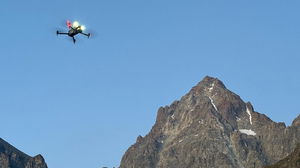For U.S. and Canadian travelers craving connection with nature, hiking offers more than just a scenic escape—it’s a path to discovery, challenge, and personal renewal. As interest in slow, mindful travel grows, so does the appeal of the world’s most iconic trails. From the misty cliffs of Kauai to the glacial peaks of Patagonia, these hiking destinations promise unforgettable experiences that blend natural beauty with cultural depth.
Whether you’re a weekend warrior or an experienced trekker, these nine global trails have something for every skill level and travel dream. They’re not just routes through stunning landscapes—they’re journeys into history, heritage, and self. With proper planning and an adventurous spirit, these hikes are more than bucket-list ideas—they’re real, reachable, and waiting to be explored. Here’s everything U.S. and Canadian tourists need to know before lacing up their boots and heading into some of the world’s most extraordinary hiking destinations.
North American tourists are reshaping global travel demand with a newfound passion for outdoor pursuits. Since the pandemic, interest in nature-based travel has exploded. According to the Adventure Travel Trade Association, over 60% of post-2020 U.S. travelers favor outdoor experiences, and hiking is now the top-booked activity for Canadian outbound tourists. As urban fatigue and climate anxiety rise, people are looking for rejuvenating, low-impact travel that blends adventure, wellness, and environmental mindfulness. Hiking meets all these needs—and more.
Arguably one of the most rewarding treks on Earth, Nepal’s Annapurna Circuit is a holy grail for seasoned hikers. The circuit covers roughly 100 to 145 miles, depending on your route, circling the Annapurna Massif and reaching a breathtaking elevation of 5,416 meters at Thorung La Pass.
What makes this trek ideal for U.S. and Canadian hikers is its variety. From lush subtropical jungles to snowy alpine zones, it offers an ever-changing landscape. The trail also introduces trekkers to Nepalese hospitality in teahouse lodges and Buddhist shrines that dot the villages. Best undertaken between March–May or October–November, the Annapurna Circuit provides spiritual and scenic rewards in equal measure.
This region is a hotspot for Canadian and U.S. hikers who favor rugged, untouched landscapes. With well-established refugios (mountain lodges), the trail is logistically manageable while still offering raw adventure. The prime season runs from November to March. As climate change alters glacier formations here, many North Americans are prioritizing this trail while it’s still in its pristine state.
Due to its tropical environment and remote setting, the trail requires a camping permit and physical preparation. Its blend of coastal drama, native flora, and deep green valleys makes it not just a hike, but an escape into another world. It’s best tackled during drier months (May–September) and offers a top-tier wilderness experience without leaving U.S. soil.
Accessible from Reykjavik and supported by staffed mountain huts, the Laugavegur Trail is one of Europe’s most approachable yet visually captivating hikes. Many travelers extend the route by linking it with the Fimmvörðuháls Trail to experience Iceland’s twin glaciers. Ideal travel time is June to September.
For those wanting epic treks within the U.S., California’s Pacific Crest Trail (PCT) and John Muir Trail (JMT) are legendary. The PCT spans over 2,650 miles from the Mexican to Canadian border, while the 212-mile JMT carves through the Sierra Nevada from Yosemite to Mount Whitney.
North Americans seeking long-form solitude often choose these trails for their scale and scenery. While the PCT can take months, sections such as the Sierra corridor are popular among week-long trekkers. Permits are competitive—book well in advance—and late summer (July–September) offers the best access.
Europe’s best-known long-distance trail, the Tour du Mont Blanc loops 170 kilometers through France, Italy, and Switzerland. It combines challenging ascents with European charm—Alpine hamlets, vineyards, and hearty regional cuisine.
Popular among Canadian and U.S. hikers looking for structured, yet independent hiking, the Tour du Mont Blanc can be self-guided or done with support from tour operators. The trail’s mix of accessibility and awe-inspiring alpine views makes it one of the most satisfying experiences on the continent.
Another Nepalese treasure, the Everest Base Camp Trek is ideal for hikers with dreams of standing beneath the world’s highest peak. Spanning roughly 130 kilometers over two weeks, the trail journeys through Buddhist villages, glacial valleys, and sacred monasteries.
While the trek doesn’t require technical climbing, its elevation demands acclimatization and preparation. American and Canadian hikers often cite this trail as a life goal, and thanks to widespread teahouse accommodation, it remains accessible without sacrificing adventure. October–November and March–April are best for clear skies and manageable conditions.
For those preferring to stay local, Ontario’s Bruce Trail offers a piece of UNESCO-protected natural heritage. Stretching 890 kilometers along the Niagara Escarpment, it’s Canada’s oldest marked hiking route and a favorite for section-hikers and families.
Its proximity to Toronto and abundance of entry points make it perfect for long weekends or extended treks. The trail winds through old-growth forests, limestone cliffs, waterfalls, and rich biodiversity zones. Canadian travelers looking for a low-carbon, high-reward adventure will find it here.
Tasmania’s Overland Track is a 65-kilometer journey through Cradle Mountain–Lake St. Clair National Park. It’s particularly appealing to North Americans interested in off-the-beaten-path destinations.
The trail weaves through alpine moorlands, temperate rainforest, and glacial valleys, with unique wildlife like wombats and Tasmanian devils frequently spotted. Travel season runs from November through April, and mandatory permits help preserve its delicate ecosystem.
As climate conditions shift, so do travel patterns. Canadian and U.S. hikers are now looking toward cooler, lesser-known destinations such as Scotland’s West Highland Way, Canada’s Great Divide Trail, and New Zealand’s Routeburn and Kepler Tracks.
Simultaneously, gear innovations, app-based trail navigation, and social media sharing have lowered the entry barrier for aspiring hikers. This has led to a democratization of hiking, where more people from urban and diverse backgrounds are venturing onto trails that were once only frequented by hardcore enthusiasts.
For U.S. and Canadian tourists, hiking is no longer a niche pursuit—it’s a defining element of modern travel. Whether you’re chasing the sunrise in Patagonia, soaking in thermal rivers in Iceland, or tracing ancient paths in Nepal, the world’s most stunning landscapes are best experienced one step at a time.
As environmental awareness and wellness-driven travel rise, hiking offers a rare combination of serenity, strength, and story. It empowers travelers to engage deeply with the planet, with themselves, and with the cultures they encounter along the way.
























